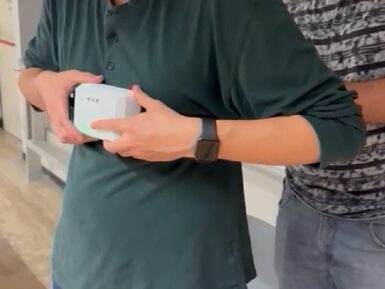
Solar Panel Charge Controller - 10 A
Charge controller for photovoltaic applications controlled by a microcontroller and capable of operating automatically at both 12 and 24 V.
Overview
It allows to provide the right degree of current to the batteries protecting them from an excess of discharge or charge in order to prolong their life cycle as much as possible.
Attention! use only with 12 and 24 V solar panels.
It protects the battery from polarity reversal, automatically enters protection and locks when the load current exceeds the regulator’s range. In case of short circuit, it enters protection and it overload protection.
To avoid complete battery discharge, the regulator will automatically disconnect the load at a certain voltage that cannot be less than 11.2 V for the 12 V battery and 22.4 V for the 24 V batteries.
Tech specs
- Nominal voltage: 12 V / 24 V automatic detection
- Maximum current: 10 A
- Maximum solar panel input voltage: 41 V
- Cut-off voltage: charged battery: 13 V (at 12 V) - 26 V (at 24 V) discharged battery: 11.2 V (at 12 V) - 22.4 V (at 24 V)
- Reconnection voltage: 13 V (at 12 V) - 26 V (at 24 V)
- Voltage drop: < 170 mV
- Dimensions (mm): 133x70x35
- Weight: 150 g
Conformities
Get Inspired

For children who experience certain developmental delays, specific types of physical therapies are often employed to assist them in improving their balance and motor skills/coordination. Ivan Hernandez, Juan Diego Zambrano, and Abdelrahman Farag were looking for a way to quantify the progress patients make while simultaneously presenting a gamified approach, so they developed a standalone node for equilibrium evaluation that could do both. On the hardware side of things, an Arduino Nano BLE 33 Sense Rev2 is responsible for handling all of the incoming motion data from its onboard BMI270 six-axis IMU and BMM150 three-axis magnetometer. New readings are constantly taken, filtered, and fused together before being sent to an external device over Bluetooth Low Energy. The board was also connected to a buzzer and buttons for user inputs, as well as an RGB LED to get a real-time status. The patient begins the session by first putting on the wearable and connecting to the accompanying therapist application. Next, a game starts in which the user must move their torso to guide an image of a shark over the image of a stationary fish within a time period — ultimately trying to get the highest score possible. Throughout all of this, a vision system synchronizes its readings with the IMU sensor readings for an ultra-detailed look at how the patient responds to the game over time. To read more about the project, you can visit the team's write-up on Hackaday.io.





